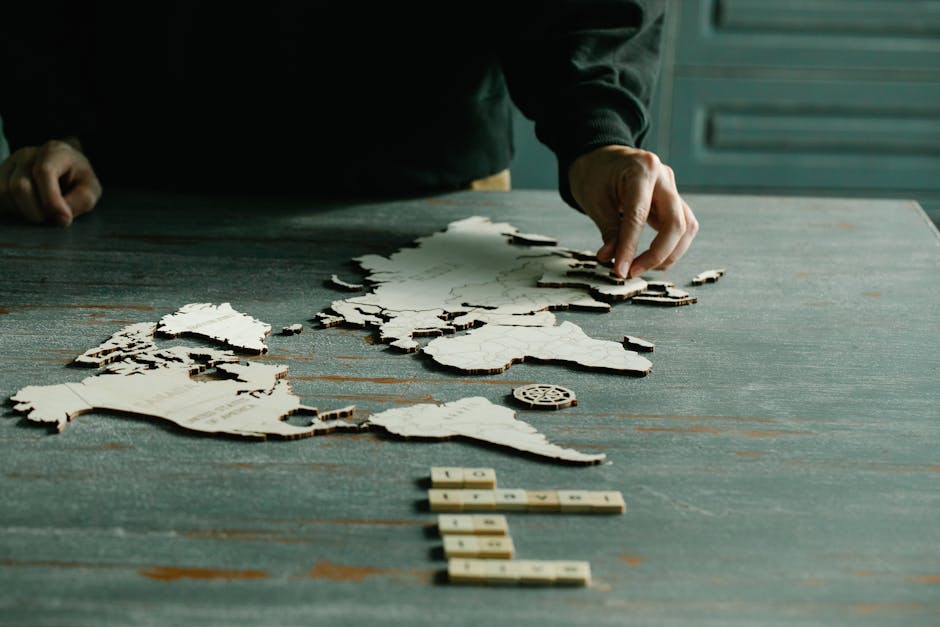Rethinking Graphics: More Than Just Pretty Pixels
Why Graphics Matter (But Not How You Think)
When people talk about video game graphics, they often focus on visual fidelity—how real, crisp, or detailed everything looks. But great graphics are about more than pushing pixels or showcasing the latest hardware. They’re about purpose and player experience.
- Visuals set the tone and mood of your game
- They influence how you perceive gameplay, mechanics, and even difficulty
- A stunning game can still feel empty if the visual direction lacks focus or intention
How Visual Style Shapes Gameplay
Graphics are deeply intertwined with how we engage with a game. Whether it’s the clean layout of a strategy game or the lush, dynamic world of an open-world adventure, the art direction affects more than aesthetics—it drives emotion, immersion, and interaction.
- A cluttered interface can make a game harder to play, no matter how beautiful it looks
- Stylized visuals can highlight important gameplay elements more clearly than ultra-realistic ones
- Color, contrast, and animation all create visual cues that guide and inform players subconsciously
Realism vs Stylization: Setting the Stage
Debates about realism and stylization in games often miss the point: both approaches can be powerful when used intentionally. It’s not about which is better—it’s about what fits the game’s goals and tone.
Realism:
- Emphasizes immersion and believability
- Works well for simulations, horror, or dramatic storytelling
Stylization:
- Encourages creativity and visual identity
- Can age better and run smoother across platforms
- Allows more flexibility in conveying complex ideas or emotions
In the end, the best visuals are the ones that serve the game’s purpose. Whether it’s a minimalist platformer or a hyper-detailed RPG, the most successful games use graphic style as a tool—not just a showcase for technology.
High-end visuals used to be a bonus. Now they’re the baseline. Lighting, textures, and physics are doing more than creating eye candy — they’re dialing up immersion. Small touches like sweat dripping during a boss fight or the subtle bend of leaves in wind aren’t just technical trophies. They pull players in, make digital worlds feel lived-in and believable.
When built right, these environments lead to deeper emotional impact. A flickering flashlight in a horror game hits different when shadows behave like they should. A character’s quiet look during a story beat lands harder when skin, eyes, and light act like real-world elements. Detail matters.
It’s no surprise that the genres cashing in most include FPS titles, simulators, and narrative-driven adventures. These are where top-tier fidelity truly shines. Picture a police sim where mud interacts with car tires in real time or a post-apocalyptic thriller where weather shifts inform plot beats.
But all this realism comes at a price. High-fidelity assets demand power. Load times increase. Older systems choke. Plus, unlike stylized games, ultra-realistic art can age fast. What looks cutting-edge today might look stiff and outdated in a year or two.
Visual fidelity is pushing the line between game and reality. Just know that line also comes with a cost.
Some games fade fast. Others stick around for decades. The difference often comes down to art direction. Games that age well tend to dodge hyper-realism and instead lean on strong style, tight mechanics, and smart technical choices.
Timeless games aren’t chasing the latest trends; they carve out their own lane. Think cel-shaded worlds, minimalist shapes, or stylistic textures that don’t age like dated 3D models. These choices aren’t just about looks; they support unique gameplay and open space for creative problem-solving.
Iconic examples like Journey, Hyper Light Drifter, and Limbo didn’t just look different when they launched. They still look good now because they weren’t trying to mimic real life—they built their own visual language.
And while flashy realism often demands high-end rigs, many of these art-driven games run on modest hardware. That means they travel better across devices, hit more markets, and last longer in stores and libraries. Lower system requirements can be a form of creative freedom, not a limitation.
Visual design in games isn’t just about looking good. It’s about function. When done right, it makes the experience smoother, faster, and more intuitive. When it misses, you’re left squinting at HUD elements or wondering where that last hit came from. A game’s visual style directly affects clarity and accessibility. High-contrast UI, readable fonts, and distinct color coding can mean the difference between understanding the situation or hitting pause to figure it out.
Feedback loops—like flashing red screens for damage, glowing objectives, or changing character posture—keep players informed without needing text. The more immediate and subtle the cues, the more natural the game feels. It’s not about being fancy—it’s about being clear.
But clarity has a cost. Overdesigned visuals can tire the eyes. Too much motion, lighting, or clutter drains focus. Long play sessions become exhausting, not immersive. Visual fatigue creeps in and so does disengagement.
So no, better visuals don’t always make better gameplay. Flashy doesn’t equal fun. Looks should serve the mechanics. If the art gets in the way of the play, it’s doing too much. Smart design speaks quietly—and players notice when it does.
In 2024, visual style in gaming isn’t about choosing between realism or stylization. It’s about blending both. Studios are mixing hyperreal environments with clean, stylized UIs to strike a balance between immersion and readability. You get lifelike lighting paired with neon menus, or finely detailed textures sitting under minimalist design systems. It’s not a gimmick. It’s a response to how players consume games now—across multiple screens and formats, from handhelds to high-end rigs.
Indie developers continue to push the envelope on stylization. Whether it’s sketchbook aesthetics or claymation reboots, smaller studios are doubling down on looks that stand out in a scrolling feed. Meanwhile, AAA teams are going all-in on tech. Photogrammetry, ray tracing, and volumetric lighting aren’t just flexes—they’re tools to make worlds feel tangible, grounded, and alive. Studios that can do both—nail the art and the tech—are setting the benchmark.
What does the audience want? The data says: both. Survey feedback and sales trends show players crave visual identity they can connect with, plus technical polish that holds up on next-gen hardware. Expect more hybrid visuals moving forward.
Want more on current hits? Read Top Reviewed Games of 2024 and What Makes Them Great
No matter how slick the platform, no two vlogs are built the same. Traditional long-form videos carry the weight when you’re telling in-depth stories, building trust, or crafting a narrative that needs room to breathe. They’re strong where it counts: retention, searchability, and emotional connection. These are the formats that build slow, steady loyalty.
Short-form, on the other hand, wins fast. It’s the front door of content. Quick to produce, easy to consume, and great for discovery. It’s where new viewers meet you. Algorithms love it because viewers do too—but unless it’s tied to a deeper strategy, that attention can disappear just as quickly as it arrived.
Choosing the right format depends on what you’re saying, who you’re saying it to, and where they are. Product reviews? Tutorials? Journey vlogs? Long form has room to work. Behind-the-scenes peeks or reactive commentary? Short form crushes it. Both have a place, but knowing when to switch lanes matters.
At the end of the day, the camera doesn’t do the thinking for you. Creativity beats filters, effects, and format preferences. The strongest creators adapt their style to the story—and never the other way around.
Let’s stop asking which style of vlogging is “better.” That’s not the point anymore. Whether it’s cinematic travel vlogs or raw, talk-to-camera updates from a cluttered bedroom, the real question is: what’s right for the creator, the audience, and the message?
For vloggers, it means being honest about who they’re creating for. A gaming dev looking to preview builds needs clarity and quick updates. A wellness coach might lean into slow, reflective storytelling. Knowing the end viewer—and what they value—dictates everything from framing to pacing.
On the viewer side, it’s time to look past polish. Yes, 4K drone shots look amazing, but they don’t always make the content better. Sometimes, it’s the unedited, lo-fi clip that delivers impact. Good design isn’t always about cinematics—it’s about intent.
The smartest creators in 2024 aren’t chasing trends. They’re choosing formats that support their ideas and serve their communities. That’s the shift—from flash to fit.





